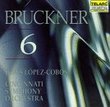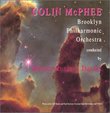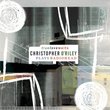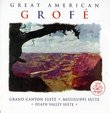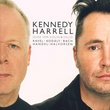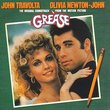| All Artists: Igor Stravinsky, Benjamin Frith, Peter Hill Title: Stravinsky: Music for Two Pianos (Music For Four Hands) Members Wishing: 0 Total Copies: 0 Label: Naxos Release Date: 6/18/1996 Genre: Classical Styles: Ballets & Dances, Ballets, Forms & Genres, Concertos Number of Discs: 1 SwapaCD Credits: 1 UPC: 730099438629 |
Search - Igor Stravinsky, Benjamin Frith, Peter Hill :: Stravinsky: Music for Two Pianos (Music For Four Hands)
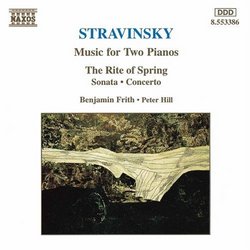 | Igor Stravinsky, Benjamin Frith, Peter Hill Stravinsky: Music for Two Pianos (Music For Four Hands) Genre: Classical
|
Larger Image |
CD DetailsSimilar CDs
Similarly Requested CDs
|
CD ReviewsAssured Readings of Unjustly Neglected Music Karl Henning | Boston, MA | 09/27/2001 (5 out of 5 stars) "I picked this one up for the Concerto alone, and it would be worth it for the Concerto alone (which is said to be Stravinsky's favorite among his purely instrumental chamber works), but the whole disc is terrific. It is the best recording I have heard to date of the (admittedly under-recorded) Concerto for two pianos, which is MY favorite of all middle-period Stravinsky, and the best piano performance I have heard of "Le sacre," whose textures are so orchestral in conception, that even four hands can barely manage the score.At the risk of being tedious, this reading of the Sonata is the best I have heard. It is an affable, gracious work, which can too often be over-prettified. The music itself IS often pretty, but for that very reason, it does not need layers of rouge.Mark Swinton mentions "Stravinsky's own arrangement for two pianos" of "Agon" and "Le sacre"; since these were both ballets, and therefore intended for stage production, the four-hands piano arrangements were a purely practical matter, in order to rehearse the dancers. So it is no particular surprise that Stravinsky prepared the four-hands arrangement of "Le sacre" to be done at one piano. ("Agon" on the other hand, is so all over the place, and rhythmically diverse, that it probably needs two pianos just so the two players can remain on speaking terms afterwards ....)This in no way diminishes the delight in hearing "Le sacre" at the piano; there are some aspects of the score which are sonically clearer in the homogeneous (and hammer-driven) piano timbre, which meld together in Stravinsky's enormous orchestration ... which included eight horns ... as far as I can tell, so that the famous polychord (E-flat dominant seventh over F-flat major) in the "danses des adolescentes" could be punctuated in its entirety by the horn timbre.The music is brilliantly played, as Mark says; but that is NOT all. It is marvelous music, some of the finest in the considerable catalogue of one of the twentieth century's musical giants; music which deserves to be heard, deserves to be played well." Very Fine Performances of Neglected Masterworks Grady Harp | Los Angeles, CA United States | 11/22/2006 (4 out of 5 stars) "Naxos label has managed to fill some gaping holes in the recorded repertoire and this delightful recording from 1996 is certainly a welcome addition to the library. While many famous pianists have recorded the solo piano versions of Rite of Spring, this is one of the few versions of the two-piano version. Benjamin Frith and Peter Hill may not be major names in the public eye, but their commitment to this work is first class. But for this listener the works that bear repeated listenings are the rarely heard 'Sonata for 2 pianos' and the 'Concerto for 2 solo pianos', both works being favorites of Stravinsky himself and of concert goers fortunate enough to have heard then in the hall. The readings of both of these works are superb with just the right balance between the pianos to make it sound like one huge keyboard! The pianists play with nimble dexterity, rhythmic accuracy and a driving propulsion that yields to melodic lingering when indicated. Recordings such as this are too rare and are like a breath of fresh air when they appear. Highly recommended. Grady Harp, November 06 " Stripped Down Stravinsky Philippe Landry | Louisiana | 07/30/2007 (5 out of 5 stars) "You can really feel the primal idea behind The Rite on this recording. The piano version brings out colors and tones that are hard to distinguish in the full orchestral ballet versions. Definately a must AND at a great price too, thanks to Naxos."
|

 Track Listings (28) - Disc #1
Track Listings (28) - Disc #1


